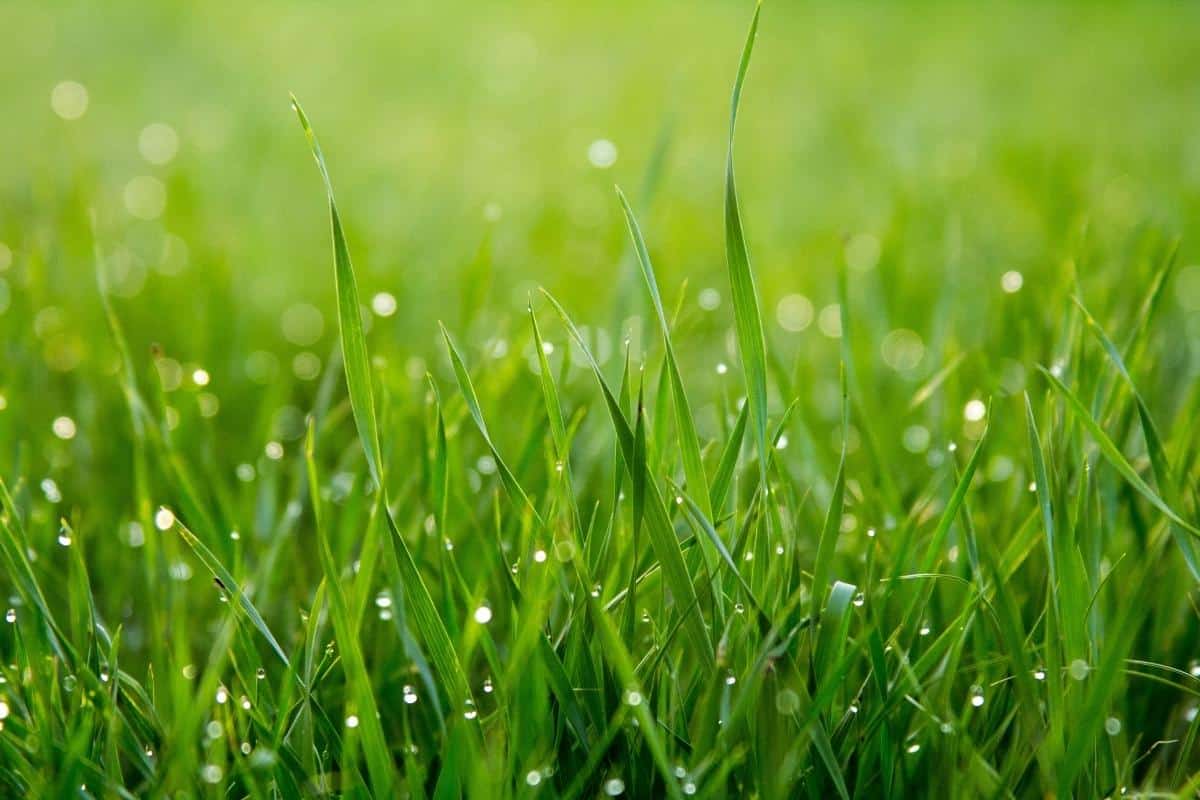This page may contain affiliate links. If you click and buy, we might get a small commission at no cost to you.
While the question “when is the best time of year to plant grass seed?” may seem like a simple one, it is more complex than you may think. When you think of the planting season, you probably think of the spring season. With grass, the best season to plant will depend on the type of grass seed you are sowing.
When Is the Best Time of Year to Plant Grass Seed?
Spring is the ideal time to plant warm season grass, while cool season grasses will need to be planted in the fall. Since your specific climate will determine what type of and when to plant grass seed, it is important to determine whether your area is a warm season, cool season, or a transition zone.
Furthermore, you should consult the USDA plant hardiness zone to figure out the best species of turfgrass for your location. This little bit of research will help ensure you select the correct species of grass seed for your zone.
What is Warm Season Grass?
Warm season grasses thrive in areas with hot summers and mild winters. Bermuda (Cynodon dactylon), St. Augustine (Stenotaphrum secundatum), and Bahia (Paspalum notatum) are a few common warm season grasses.
These types of grasses germinate and grow in climates where the temperatures are above 80 degrees. They also don’t require nearly as much water as cool-season grasses.
Warm season grasses grow best when planted in late spring and summer. The top 3 inches of the soil should have a temperature of 65 degrees Fahrenheit and above when planting this type of grass seed.
What is Cool Season Grass?
Tall fescue (Festuca arundinacea), Kentucky blugrass (Poa pratensis), and perennial ryegrass (Lolium perenne) are common cool-season grasses. These types of grass seeds thrive in cooler climates.
According to Pennington, you will want to plant cool-season grasses at least 45 days before the date of the first frost. This will give the seeds two cool growing seasons (the winter and spring) to become established before the harsh heat of the summer sets in.

What is the Transition Zone?
The transition zone is a mixed climate area that falls between the clearer weather patterns of the warm season and cool season grasses. Those in transition zones can plant a mixture of both cool season and warm season grasses.
In these areas, more maintenance, such as watering the lawn regularly during the summer heat, is needed for cool season grasses, while the warm season grasses will go dormant and turn brown in the colder weather. Another option is to plant cool season grass in the northern parts of the transition zones, and warm season grass in the southern parts.
Can I Plant Grass Seed in the Summer?
Cool season grasses can be planted in late summer as long as the daytime temperatures are no higher than 75 degrees. In fact, cool-season grasses will actually go dormant and not grow if the soil temperature is above 65 degrees. For most areas of the United States, September is the ideal month to plant cool-season grass.
As for warm-season grasses, the summer months are the best time to plant them. They can be planted as early as late spring or early summer. The soil temperature will need to be above 65 degrees to sow warm-season grasses.

Can I Plant Grass Seed in the Winter?
Planting grass seed in the winter is possible, and actually provides some benefits. However, it is not without risk. Grass seeds can go dormant during the winter months, waiting to sprout until the spring when the temperatures begin to rise.
This process is called dormant seeding. Dormant seeding lets you get a jump on next year’s planting season, which means you won’t have to spend much time seeding your lawn in the upcoming spring and summer months.
The downside to dormant seeding occurs if the winter weather warms up for just a few days. This can cause the seeds to sprout prematurely. And newly sprouted grass seed cannot survive the harsh winter weather.
How to Plant Grass Seed
How you plant grass seed will depend on whether you are seeding or overseeding. Seeding is the process of planting grass over a bare area, while overseeding is seeding over an existing lawn. Lawns can thin over time, and overseeding helps to thicken your lawn.
For seeding, you will need to prepare the soil by tilling or raking the ground, removing any lumps of soil. A good general rule of thumb is to till the soil to a depth of 3-inches. Once tilled, add nutrients, such as compost or fertilizer, and work them into the soil.

Spread the grass seed over the prepared soil, making sure to follow the sowing guidelines on the package. Protect the seeds by covering them in a thin layer of straw to prevent the wind from blowing them away.
Finally, water the area deeply but do not over-saturate the ground. The top 1-inch of soil will need to be kept moist but not soggy.
How to Overseed a Lawn
Overseeding is a bit easier but will require more than just tossing the grass seeds on the ground.
Start the process by mowing your lawn shorter than you normally would. Then rake the lawn to remove dead grass, leaves, and other debris, while also helping to loosen the top layer of soil.
Pour the grass seed into your seed spreader, set the spreader settings to the recommended usage rate as stated on the grass seed bag, and apply to your lawn.
How to Care for Newly Planted Grass Seed
A newly seeded area will require regular watering to promote good root growth and healthy plants.
Mist the seeds with water in the morning. If needed, repeat the misting again at midday. If the weather is hot and dry, you may have to water the seeds more frequently.
Depending on the type of grass, you can expect the seeds to begin to sprout between 7 and 21 days. The top 2-inches of soil will need to be kept moist once the seeds begin to germinate.
Continue in this manner until the grass reaches mowing height, which is about 2 1/2 to 3 1/2 inches. After the first mowing, you can cut back watering to once or twice a week.



